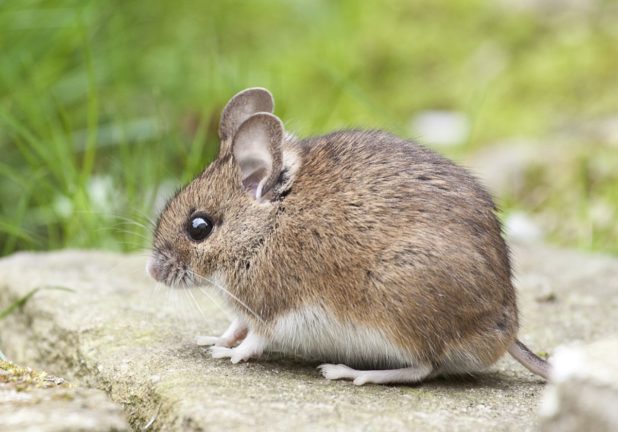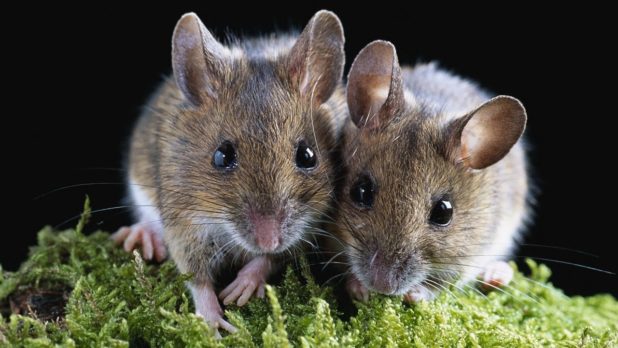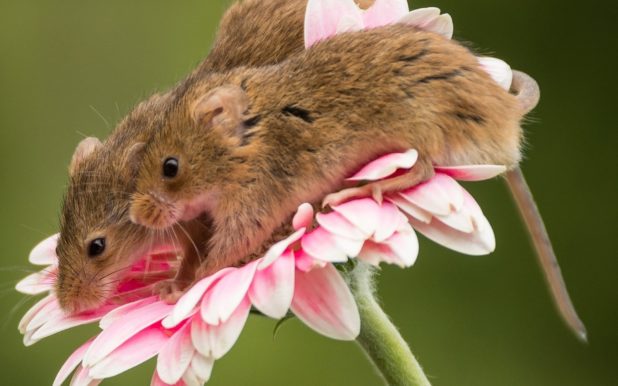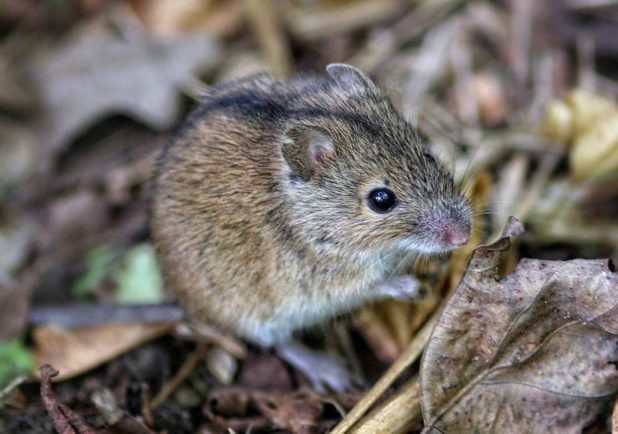Mice are considered amazing creatures that can survive in the most difficult conditions. These rodents have long been used in laboratories for the purpose of conducting experiments, and in the wild, mice recreate large flocks. As a pet, decorative mice have also proven themselves since ancient times.
Scientists at the University of Jerusalem have found that mice resemble humans. If a mouse is enlarged to human height and its skeleton is straightened, it becomes clear that the joints of a person and a rodent are the same, and the bones have an equal amount of detail. Scientists have even said that studying the function of human genes in mice is easier than in humans.
In the East, mice were perceived differently than in the West, where they were only talked about negatively. In Japan, for example, the mouse was the companion of the god of happiness. In China, the absence of mice in the yard and in the house alarmed.
1. Everyone thinks mice like cheese. But this opinion is false, because such rodents like to eat foods high in sugar, such as grains and fruits, and objects with a strong smell of cheese can disgust them.
2. For laboratory experiments, colored and white mice are usually used, which were bred by selection. These rodents are not wild, easy to handle and eat various foods, especially special briquettes, which they are fed in research centers.
3. Mice have a strong maternal instinct, and not only towards their children. If you throw a few alien cubs to a female mouse, then she will feed them as her own.
4. Room mice have a great sense of height and fear it. That is why a mouse left unattended will never start head over heels from a nightstand or table top.
5. Throughout life, the incisors of mice are constantly worn down and evenly acquire the length they need.
6. The mouse has a proportional structure. Her body and tail are the same length.
7. The ancient Egyptians prepared a drug from mice and took it as a medicine against various diseases.
8. Every person needs to replenish the reserves of vitamin C in the body, but mice do not have to do this, because vitamin C is produced in them “automatically”.
9. The most famous mouse is Mickey Mouse, which was first discovered in 1928.
10. In some African and Asian states, mice were considered a delicacy. So, for example, they are not disdained in Rwanda and Vietnam.
11. Hearing in mice is approximately 5 times more acute than in humans.
12. Mice are very shy creatures. Before getting out of its own shelter, this rodent will carefully study the situation. Noticing the danger, the mouse will run away, hiding after that in a secluded place.
13. The heart of such a rodent beats at a frequency of 840 beats per minute, and its body temperature is 38.5-39.3 degrees.
14. Mice are able to communicate with each other using sounds. Some of these sounds a person hears in the form of a squeak, and the rest is ultrasound, which is not perceived by us. During the mating season, due to ultrasound, males attract the attention of females.
15. The mouse is able to crawl into the narrowest gap. She has this opportunity due to the absence of clavicles. This rodent simply compresses its own body to the required size.
16. The mouse’s vision is colored. She sees and distinguishes between yellow and red.
17. Female mice rarely fight among themselves. Together, they are able to raise offspring without showing any aggression to other people’s cubs. Male mice do not participate in the upbringing of babies.
18. The word “mouse” comes from the ancient Indo-European language, which means “thief” in translation.
19. The ability of mice to completely regenerate damaged heart muscle tissue shocked society. Before this ability was discovered in a rodent, it was believed that this function is lost by all living creatures that stand on the evolutionary ladder above reptiles.

20. In the retina of the mouse, it was possible to detect a structure of light-sensitive cells, which affected the work of the biological clock. If a blind mouse has eyes, then they live in the same daily rhythm as those of sighted rodents.
21. Each mouse has a special gland on its paws, thanks to which the rodent marks the territory. The smell of these glands is transmitted to all objects they touch.
22. The strongest mouse, which was able to defeat all the applicants in the process of bloody battles, is chosen as the leader. The leader is obliged to restore order among the members of the pack, because mice have a rigid hierarchy.
23. In nature, mice are considered the most active at night. It is with the onset of darkness that they begin to look for food, dig holes and protect their own territory.
24. Approximately 130 varieties of domestic mice have been identified by modern scientists.
25. When running, the mouse develops speed up to 13 km/h. This rodent also climbs well on different types of surfaces, jumps and swims.
26. Mice are not able to sleep or stay awake for a long time. During the day, they have up to 15-20 periods of activity with the duration of each of them from 25 minutes to 1.5 hours.

27. Mice have a reverent attitude to the cleanliness of their own shelter. When a mouse notices that its bedding is dirty or wet, it leaves the old nest and builds a new one.
28. During the day, such a rodent should drink up to 3 ml of water, because in a different situation, a few days later, the mouse will die due to dehydration.
29. For a year, mice can bring offspring up to 14 times. At the same time, each time they give birth to 3 to 12 mice.
30. The smallest mouse in length reached 5 cm along with the tail. The largest mouse had a body length of 48 cm, which was compared with the size of adult rats.
31. At the end of the 19th century, it was possible to create a club for breeding various types of mice. It is also surprising that this club is still working.
32. Ancient Greek Apollo was the god of mice. In some temples, mice were kept to interrogate the gods. Their rapid reproduction was a sign of divine favor.

33. Mice can behave bravely and boldly. Sometimes they attack an animal that is several times their size.
34. White mice were bred by the Japanese 300 years ago.
35. In the states of the Middle East, spiny mice live, which can shed their own skin in case of danger. In place of shed skin, after a while, a new one grows and becomes covered with wool.
36. When a male mouse begins courting a female, he sings a mouse “serenade” that attracts the opposite sex.
37. In ancient Rome, mice were saved from fornication. To do this, the wives smeared their chosen ones with mouse droppings. This guaranteed that the husband would not go “to the left”.
38. Mice are beneficial not only because the cat, eating it, will be healthier and more agile. There is a physiological explanation for such love. In the wool of mice there is a large amount of sulfur, and when eating it, the cat is protected from baldness.
39. Mice often prepare supplies for themselves for the winter, but this does not mean that their activity drops sharply during this period. Their movements are carried out under the snow, because it is there that they look for food.
40. In ancient times, it was believed that mice were born from the silt of the Nile River or from household rubbish. They lived in temples, and by their behavior the priests predicted the future.
